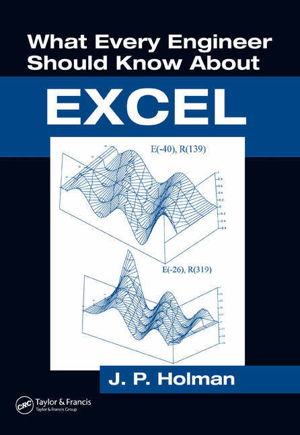
PublishedCrc Press, August 2006 |
ISBN9780849373268 |
FormatSoftcover, 242 pages |
Dimensions25.4cm × 17.8cm × 1.3cm |
With the many software packages available today, it's easy to overlook the computational and graphics capabilities offered by Microsoft(R) Excel(TM). The software is nearly ubiquitous and understanding its capabilities is an enormous benefit to engineers in almost any field and at all levels of experience.
What Every Engineer Should Know About Excel offers in nine self-contained chapters a practical guide to the features and functions that can be used, for example, to solve equations and systems of equations, build charts and graphs, create line drawings, and perform optimizations. The author uses examples and screenshots to walk you through the steps and build a strong understanding of the material. With this book, you will learn how to...*
Set up the keyboard for direct entry of most math and Greek symbols
Build a default scatter graph that is applicable to most simple presentations with little cosmetic modification
Apply many types of formats to adjust the cosmetics of graphs
Use 3D surface and area charts for data and functional representations, with associated cosmetic adjustments
Correlate data with various types of functional relations
Use line drawing tools to construct simple schematics or other diagrams
Solve linear and nonlinear sets of equations using multiple methods
Curve student grades using Excel probability functions
Model device performance using different types of regression analysis involving multiple variables
Manipulate Excel financial functions
Calculate retirement accumulation with variable contribution rate and retirement payouts to match increases in inflation
Apply Excel methods for optimization problems with both linear and nonlinear relations
Use pivot tables to manipulate both experimental data and analytical relationships
Calculate experimental uncertainties using Excel
And much more!

